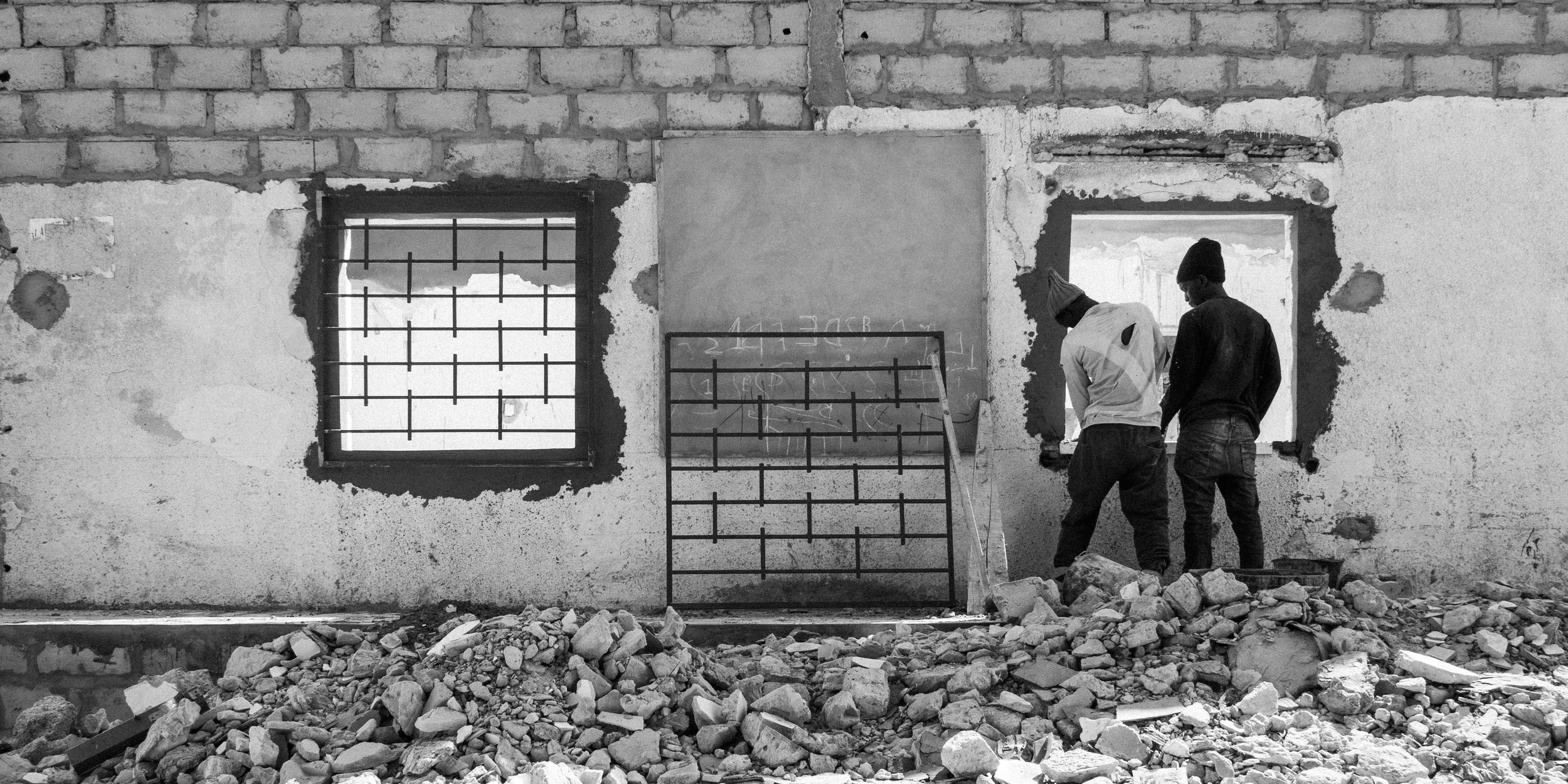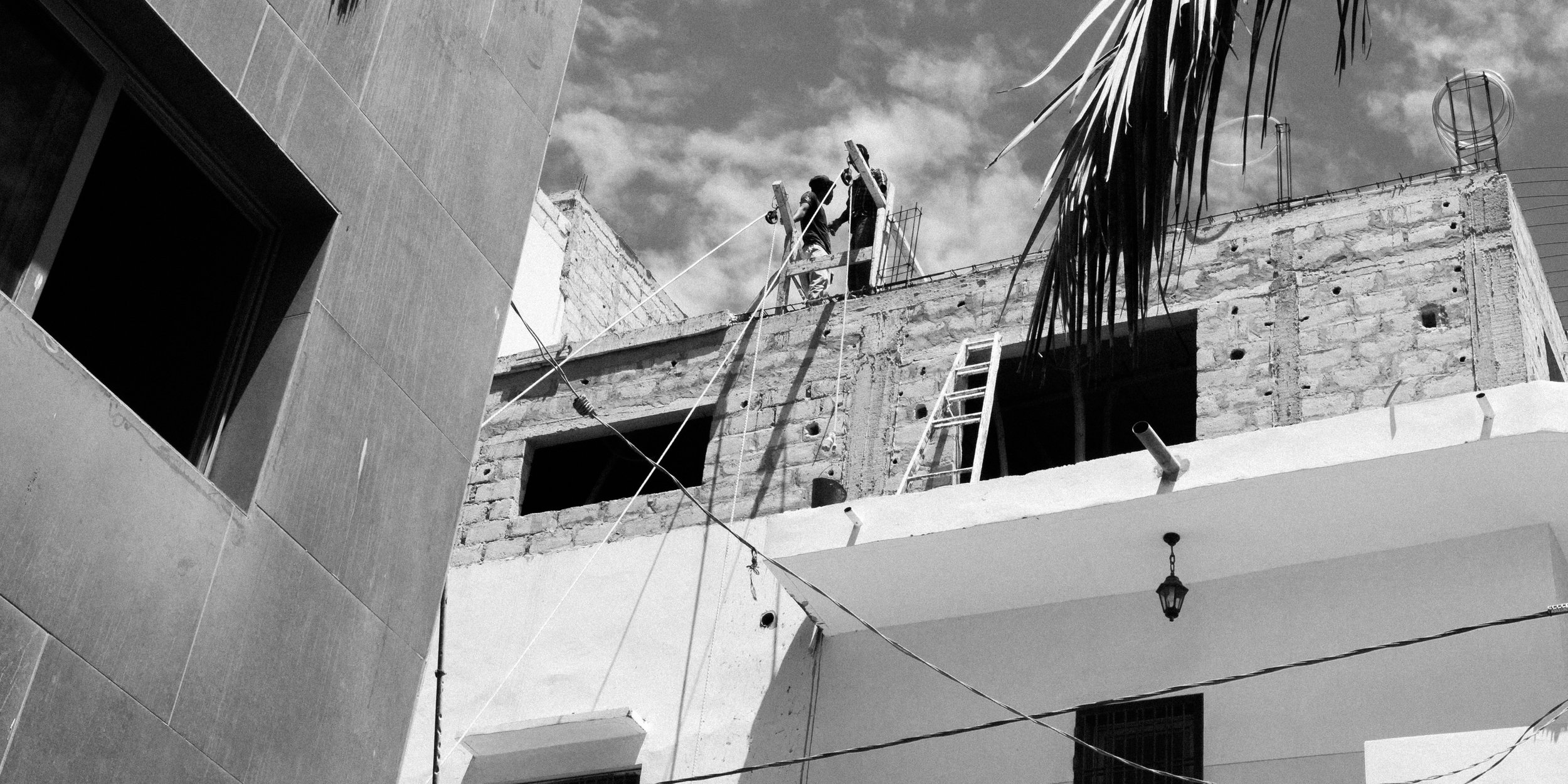This is a supplement to “Non fi daffa metti” by DICK POWIS. Read the article here.
“Non fi daffa metti” is about the men who build Dakar and themselves. It’s about how capitalism and gender are connected. In Dakar, Senegal, the global economy, the calendar of religious holidays (both Muslim and Christian), commercial construction, and gender performance are all tightly bound together such that they share synchrony.
When the economy grows, then commercial construction grows, religious holidays become more extravagant, and men can tout themselves as providers. But when the economy shrinks, then construction wanes and men have to figure out how to perform resiliency. One way they do this is to celebrate religious holidays the way they would in the good times, but by leaning on their friends and relatives abroad to send money home – and that doesn’t always work.
There are further ripples beyond these ideas though – waning construction doesn’t just mean the workers don’t work, it means that vendors can’t sell materials, truck drivers can’t move materials across the country, and materials may increase in price such that projects become too expensive to finish once the economy gets going again. Similarly, when men don’t work, they may take side-jobs or dangerous, unregulated jobs, or illicit jobs, or they may even risk their lives trying to get to Europe for employment. The women in their lives very often work even more (in the home or in the marketplace) to try to pick up the slack, and if the men migrate to the interior of the country or to Europe, their families are most likely left behind, which creates even more tension.
Masculinity, like the city of Dakar, is always under construction.
Classroom Activities
Activity 1
Create a triptych! A triptych of a three-photo series that can tell a visual story. Tell the story of three things or events that are tightly connected or interrelated to each other.
How does an action in one produce reactions in the other two? (They don’t need to all influence each other equally – remember, the performance of masculinity in Dakar has little bearing on the global economy.)
What kind of ripples do all these actions have beyond the triad?
What are the consequences of this kind of relationship?
Activity 2
Create a multimodal triptych! A multimodal triptych is a three-mode series that tells a story. Tell the story of three things or events that are tightly connected or interrelated to each other. Choosing from the following modes: photo, video, writing, illustration, or audio. (Try not use any of the modes to express the relationships. For example, don’t write about how the things are related, write about one of the things, and let the relationship come out in the triptych.)
How does an action in one produce reactions in the other two? (They don’t need to all influence each other equally – remember, the performance of masculinity in Dakar has little bearing on the global economy.)
What kind of ripples do all these actions have beyond the triad?
What are the consequences of this kind of relationship?
Why did you choose the modes you did for each thing or event? What does each mode reveal in their subject that maybe the other modes couldn’t?
Activity 3
Watch one of the following films: The Pirogue (2012), Samba (2014), or Atlantics (2019).
Make note of the structural forces (e.g., the economy, the state) and the kinds of work that everyone is doing (e.g., construction, dishwasher). Pay attention to the gender performances of each character.
Discuss the relationships between the structural forces, the motivations of the characters, and the gender performances.
How are they related? How do they push and pull on each other? What kinds of tensions are created? What are the consequences of these relationships? What ripples (whether depicted or imagined) are produced from these relationships beyond the triad of the structure, the motivation, and the gender performance?
UPDATED DECEMBER 15, 2021


